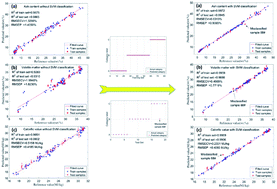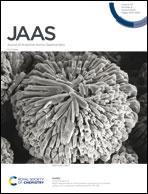LIBS analysis of the ash content, volatile matter, and calorific value in coal by partial least squares regression based on ash classification
Abstract
Determination of the ash content, volatile matter and calorific value in coal with laser-induced breakdown spectroscopy (LIBS) is significantly affected by the matrix effect, due to the physical and chemical properties of different types of coals. This work aimed to achieve more accurate determination of the ash content, volatile matter and calorific value via the classification of coal samples by their ash contents. The support vector machine (SVM) classification method, which was optimized by using a genetic algorithm (GA), was used to classify the coal samples into three categories. And then, the partial least squares regression (PLSR) was employed to establish different models for each type of coal. With this detailed classification scheme, the coefficient of determination (R2) of the training set and test set of volatile matter was improved from 0.9269 and 0.9310 to 0.9959 and 0.9888, respectively. The root-mean-square error of cross-validation (RMSECV) and the root-mean-square error of prediction (RMSEP) of volatile matter were also reduced from 1.9940% and 1.8320% to 0.4989% and 0.7719%, respectively. The results of the ash content and calorific value are also improved. This work demonstrated that this LIBS-based quantitative analysis method can be widely used in the coal industry to improve current coal property analysis.



 Please wait while we load your content...
Please wait while we load your content...